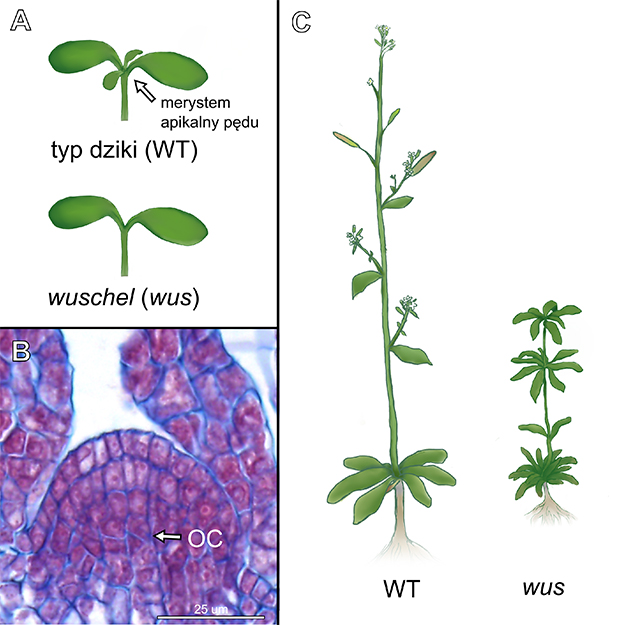A history of Arabidopsis as a model plant from WUSCHEL gene perspective
DOI:
https://doi.org/10.18388/pb.2021_404Abstract
Plants possess the ability of indeterminate growth and organogenesis. Uninterrupted development of aerial parts of plants strongly depends on the activity of the shoot apical meristem (SAM), where a pool of undifferentiated stem cells is kept throughout the plant life. The main function of SAM is cell proliferation and self-maintenance. Numerous genes functioning within the SAM have already been discovered, including SHOOTMERISTEMLESS, CLAVATA and WUSCHEL. The biological significance of WUSCHEL gene for specification of the stem cells fate was proven by various, performed over the years experiments. This was doable, also because the research was performed on Arabidopsis thaliana as a model organism. How was the WUSCHEL gene mechanism of action discovered, and subsequently experimentally proven? In this review, we will address these questions, pinpointing also how the use of a model organism enabled WUSCHEL gene functional characterisation.

Published
Issue
Section
License
Copyright (c) 2022 Advances in Biochemistry

This work is licensed under a Creative Commons Attribution 4.0 International License.
All journal contents are distributed under the Creative Commons Attribution-ShareAlike 4.0 International (CC BY-SA 4.0) license. Everybody may use the content following terms: Attribution — You must give appropriate credit, provide a link to the license, and indicate if changes were made, ShareAlike — If you remix, transform, or build upon the material, you must distribute your contributions under the same license as the original. There are no additional restrictions — You may not apply legal terms or technological measures that legally restrict others from doing anything the license permits.
Copyright for all published papers © stays with the authors.
Copyright for the journal: © Polish Biochemical Society.



